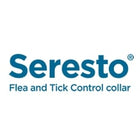
When it comes to basking in the sun, our furry companions, dogs, share some similarities with us humans. Awareness of measures to shield your dog from sunburn ensures their comfort and minimizes the potential skin-related concerns linked to excessive sun exposure. Moreover, knowing effective remedies for sunburn in dogs can expedite their healing process, enabling you and your canine companion to return to outdoor adventures swiftly and without worries.
Can Your Canine Companion Experience Sunburn?
Even though it might appear unlikely for dogs to experience sunburn due to their furry coats, it can happen. Fur offers some shielding, but it's not an invincible shield. Every dog possesses susceptible areas on their body where sunburn can sneak in, such as:
- Nose
- Ear tips/margins
- Lips/Margins of the mouth
- Tip of the tail
- Belly
- Eyelids
Several factors can render certain dogs more susceptible to sunburn, including:
- Dogs with predominantly white, pale, or ginger-colored fur (as their underlying skin is usually lighter).
- Naturally thin-coated breeds like Pitbulls, Boxers, Dalmatians, and Greyhounds.
- Hairless breeds, such as the Chinese Crested.
- Dogs with noticeable bald patches on their skin.
Recognizing Sunburn Symptoms In Your Dog
Identifying the indications of sunburn in dogs and taking prompt action is crucial. If you observe pink or red sunburned skin on your dog, it implies more damage than you'd typically see in a human sunburn. If you come across any of these signs, it's imperative to remove your dog from the sun immediately:
- Pink or reddened skin
- Skin sensitivity to touch
- Itchiness
- Flaking
- Crusting
- Dry or cracked skin
- Curling of ear edges
- Blisters
- Hair loss
- Sunburn can lead to mild fever, skin ulcers, and skin infections in severe cases.
Ways to Protect Your Dog from Sunburn
Beyond causing discomfort, sunburn in dogs can escalate to skin cancer, making prevention a top priority!
Here are several effective ways to safeguard your furry friend from sunburn:
- Time Your Walks: Opt for early morning and late evening strolls when the sun's intensity is lower. Please keep your dog away from direct sunlight and ensure there's ample shade whenever they are outdoors.
- Apply Pet-Specific Sunscreen: Choose a waterproof sunscreen specially formulated for pets, boasting an SPF of at least 30 to guard against UVA and UVB rays. Apply a double layer on vulnerable areas like the nose, belly, ears, tail, and any regions with thin fur about 15 minutes before heading outdoors. Remember to reapply as necessary, particularly after swimming. Avoid human sunscreen products or any containing zinc oxide, PABA, or salicylates. Steer clear of spray sunscreens to prevent inhalation or eye irritation, and make sure your dog doesn't lick off the sunscreen.
- Utilize UV-Blocking Clothing: Equip your dog with hats, shirts, or bodysuits designed to ward off UV rays, protecting areas where sunscreen application is challenging, such as the mouth and eyes. Consider doggie goggles with UV-blocking lenses as an extra precaution. Remember that while clothing helps, it may not cover all vulnerable areas, so sunscreen remains essential.
How To Care For Your Dog's Sunburned Skin
When you notice your dog has a mild sunburn characterized by slightly pink skin and no signs of discomfort, you can administer home treatments to alleviate their condition. Options include using cold compresses, offering oatmeal baths, and applying pet-approved aloe vera gel. However, if you observe any new or worsening symptoms, it's advisable to contact your veterinarian promptly.
In cases of sunburn beyond the mild stage, it's essential to have your dog examined by a veterinarian. Remember that the extent of tissue damage may be more severe than initially apparent. The treatment plan will be tailored to the burn's severity and the accompanying symptoms. Your veterinarian may recommend one or more of the following interventions:
- Antibiotics: To prevent or address potential infections.
- Pain Medications: To alleviate discomfort and pain associated with sunburn.
- Cold Laser Therapy: A therapeutic option to aid in the healing process.
- Wound Flushing: To ensure cleanliness and prevent infection.
- Topical Ointments or Creams: Specifically designed to promote healing and soothe the affected areas.
Following a moderate to severe sunburn, keeping your dog away from the sun is crucial until their skin has fully recovered. After recovery, diligent sun protection is essential to prevent further damage and reduce the risk of skin cancer.






